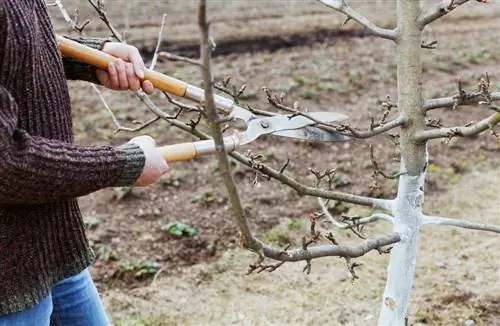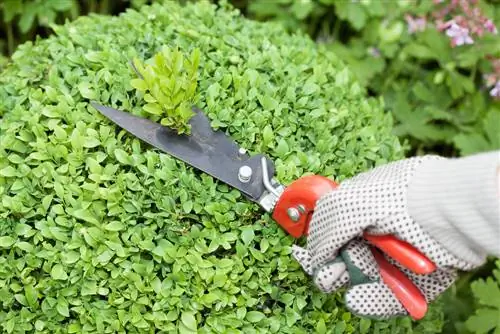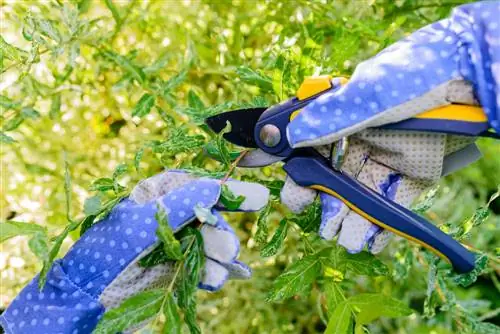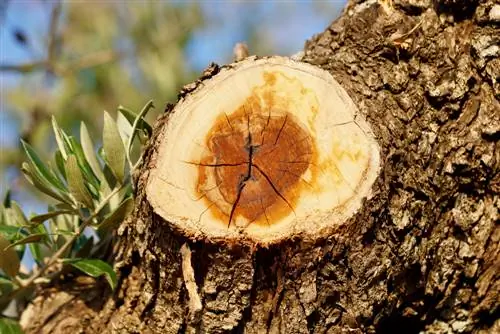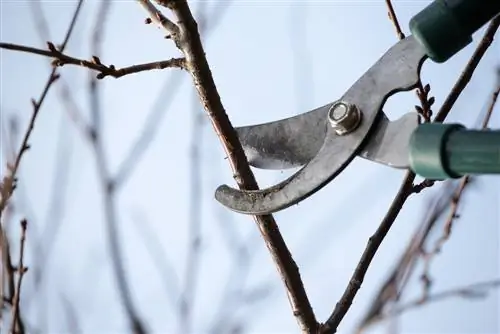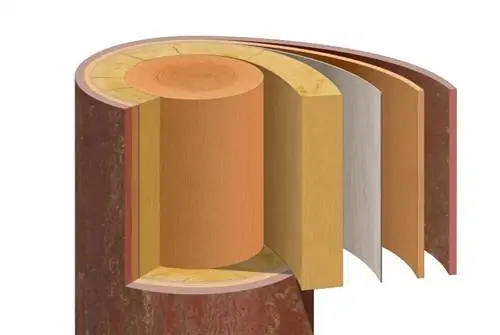- Author admin [email protected].
- Public 2023-12-16 16:46.
- Last modified 2025-06-01 06:02.
Skillful plant pruning is considered the supreme discipline in the home garden. Shrubs and trees in particular benefit if the gardener knows how to prune correctly. Since every plant is subject to continuous change over the years, there are appropriate pruning measures for the different development phases. This overview informs you about all the important types of pruning in private woody care.
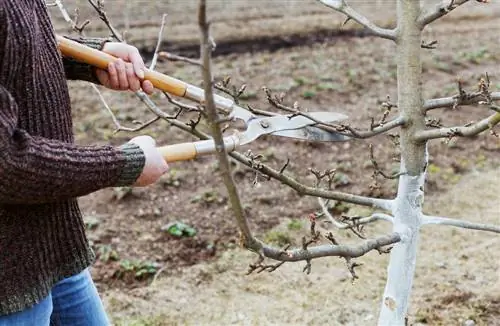
What types of pruning are there for trees?
The most important types of pruning in woody care are planting pruning, building pruning, thinning pruning, rejuvenation pruning and topiary pruning. They serve various purposes such as growth promotion, tree shaping, light and air circulation, rejuvenation and artistic design.
Pruning sets the course for vital growth
After planting shrubs or trees, pruning aims to ensure rapid growth of new roots and shoots. The extent of the pruning depends on whether the trees are deciduous or evergreen. We present the most important differences in cutting in more detail below:
Bare-rooted trees
Shrubs and trees that shed their leaves before winter are offered and planted as inexpensive bare-root goods between November and March. During clearing in the tree nursery, some of the roots were lost or damaged, meaning that the existing young shoots can no longer be fully supplied. A planting cut restores the balance between underground and above-ground growth. Cut off damaged, dead and dry roots. Then shorten all shoots by a third.
Container Plants
Young plants in containers can be planted all year round as long as the ground is not frozen. Since these shrubs and trees have a complete root ball, planting pruning is more moderate than with bare-rooted trees. Only weak and damaged branches are cut out. There is no need for pruning on flowering shrubs if they are planted shortly before or during the flowering period. Only when the flowers have withered can damaged shoots be cut off.
Build-up pruning directs growth into the optimal shape
In the first few years, the secateurs (€14.00 at Amazon) act as a baton for the ideal growth of ornamental and fruit trees. Therefore, the construction cut is often also referred to as the education cut. This type of pruning is more important in fruit cultivation than in the cultivation of ornamental shrubs. We have compiled the most common occasions for you below:
- Fruit trees: in the first 10-15 years to build a stable crown shape
- Berry bushes: trained as a bush or spindle, on a trellis or trellis, as a tall or base stem
- Evergreen foliage shrubs and conifers: building up a dense hedge with privacy factor
Most flowering bushes form a harmonious silhouette on their own. You can only limit the number of scaffolding shoots in the pot or in a small garden by means of pruning. Flowering trees that are extremely pruning-friendly are recommended for training as standard trees, such as the wonderful panicle hydrangea.
Thinning cut - guarantee for a long, vital plant life
Without pruning, shrubs and trees will sooner or later become nothing more than a shadow of their former self. Lack of pruning care results in premature senescence, the loss of flowers and disappointing fruit yields. A thinning cut is therefore part of the successful care plan for every tree.
On flowering bushes, it is sufficient if you regularly cut off dead, stunted and inward-facing ground shoots at the base. Do the same thing with the crowns of deciduous trees that decorate the garden. On fruit trees and berry bushes, thinning pruning also aims to remove worn fruit shoots and promote young fruit wood. The special variant of the thinning cut is called a fruit woodcut.
If a shrub or tree takes on expansive dimensions, the derivation cutting technique complements the thinning cut. By cutting back shoots that are too long to a younger branch, the tree will be slimmed down and not mutilated. Slow-growing and pruning-sensitive plants in particular benefit from expert derivation pruning.
Special case: topiary to green sculptures
Evergreen deciduous shrubs are ideal for artistic topiary. With a lot of patience and imagination, boxwood and colleagues transform themselves into balls, pyramids, cones or more complex shapes. Stencils help beginners achieve the perfect shape cut. Experts cut freehand.
Rejuvenation cut turns back the wheel of time
Neglected shrubs and trees are revitalized with radical rejuvenation pruning. In principle, it is an extended clearing cut in which all dead wood is consistently removed. Depending on the type and variety, cut the remaining shoots on bushes back to 10 to 30 centimeters. Crowns of deciduous trees and pome fruit trees are rejuvenated by significantly shortening the leading branches in order to initiate new growth.
Among the types of pruning, rejuvenation pruning is an explosive topic because plants react to it very differently. Before you subject your shrub or tree to this extensive pruning measure, please find out in detail about the species-compliant procedure.
Tip
The Federal Nature Conservation Act has a say in the cutting date. Paragraph 39 (BNatSchG) precisely states that radical pruning measures on all types of trees are limited to the period from October 1st to March 1st. To protect wild animals, only light pruning may be carried out during the grace period from the beginning of March to the end of September.

